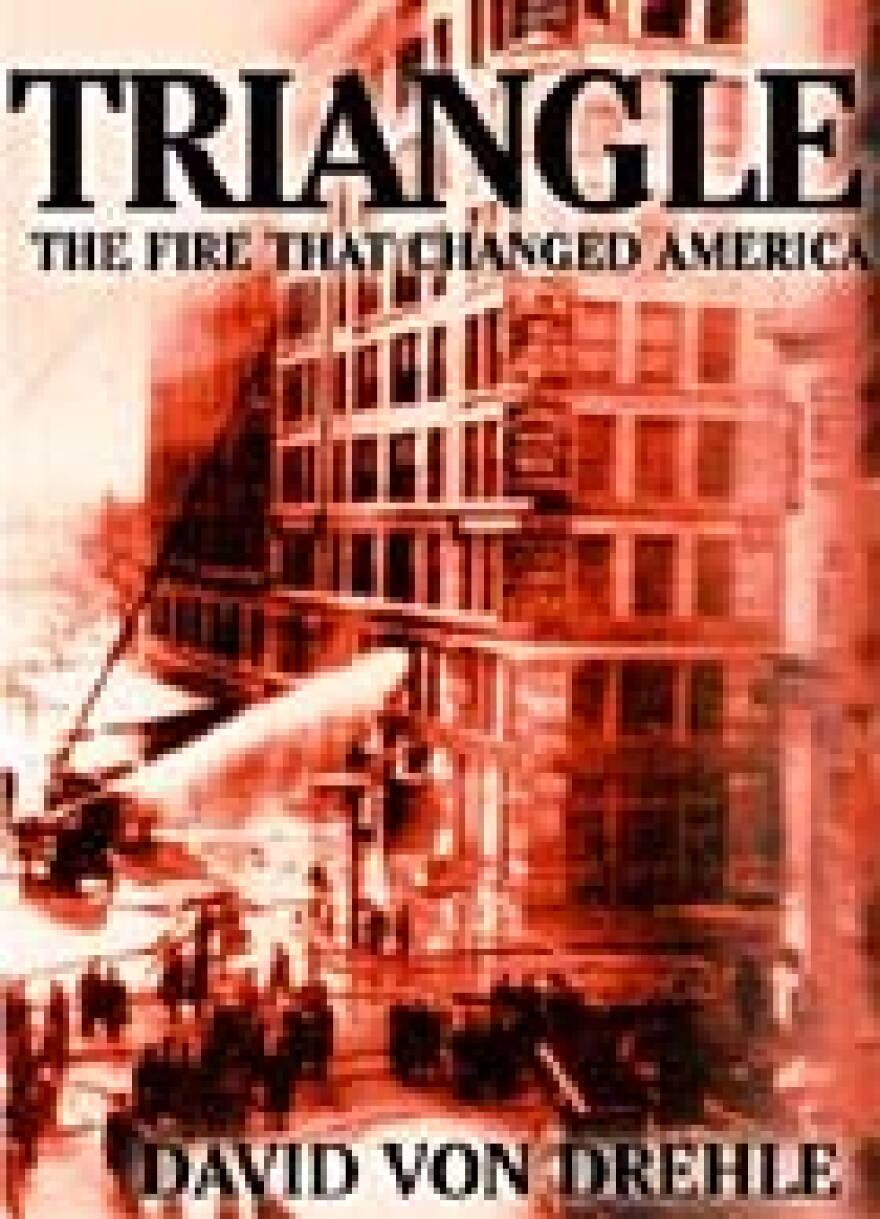
Among the many reasons to celebrate on Labor Day are workforce benefits that were hard-won: the 40-hour workweek, paid holidays and medical and dental insurance. But better working conditions and workplace safety have often come at a steep cost. A pivotal case in point is the fire at a New York City clothing factory almost a century ago.
NPR's Bob Edwards talks to Washington Post writer David Von Drehle, whose new book, Triangle: the Fire that Changed America, provides the most detailed account yet of the blaze at the Triangle Shirtwaist Factory. Von Drehle says the deaths of almost 150 workers, mostly poor immigrant women, eventually led to improvements in the lives of millions of working people.
The "Triangle Fire" started on an upper floor of the high-rise factory building in Greenwich Village on a Saturday afternoon in March 1911. As quitting time neared, employees brushed their scraps of cotton off the table and into large bins.
Somebody "tosses a match or cigarette butt into one of these bins," Von Drehle says. "It goes off like a firebomb."
The approximately 125 workers on the eighth floor "barely escaped with their lives," Von Drehle says. A quick telephone call alerted workers on the tenth floor, and they too were able to make their way out of the burning building. But for several critical minutes during the commotion, no one notified the 250 workers on the ninth floor, where most of the the employees and sewing machines were located.
At 4:45 p.m., a guard routinely locked one of the two exit doors on the ninth floor, something the company did every day at closing time, to discourage theft. It was then that the workers on the ninth floor first learned about the fire from the smoke and flames.
Some escaped through the other, unlocked door. Others used a fire escape. Still others braved the elevators.
"But eventually there was just the locked door. The other exit was blocked by fire, the elevators couldn't run, the fire escape had collapsed... and there were two horrible choices left: to jump out the windows or to die in the fire," Von Drehle says.
Fifty-four people died by jumping and the rest died in the fire.
Shortly after, the governor of New York appointed the Factory Investigating Commission. Over the next three years, the commission held dozens of hearings, resulting in the passage of the the most sweeping set of workplace labor reforms in America.
Copyright 2022 NPR. To see more, visit https://www.npr.org.


